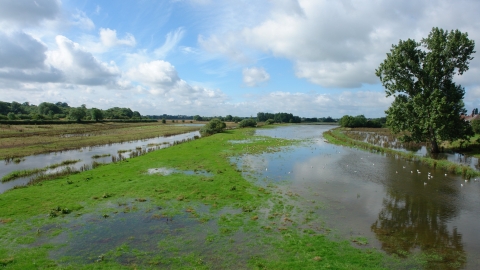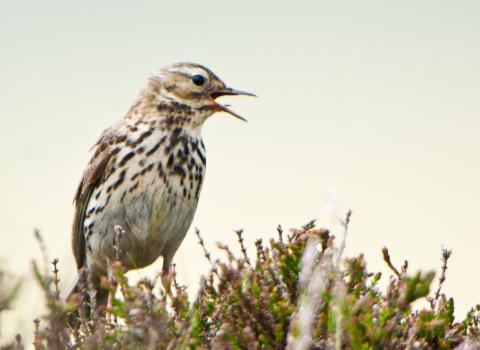
Radford Meadows
Location
Know before you go
Dogs
When to visit
Opening times
Open at all timesBest time to visit
November to February, April to MayAbout the reserve
Highlights
- Visits during winter and spring may be rewarded with the sight and sounds of many species of wetland birds such as lapwing, and snipe.
- Those with binoculars will be able to see the black poplars at the southern end of the reserve. This is one of Britain’s rarest trees and a spectacular site in summer and autumn.
Stafford: The Venice of the Midlands?
The Meadows form part of the River Penk floodplain, just one of a number of watercourses that converge in and around Stafford, before joining the River Trent near Shugborough. The nature reserve is the long strip of pasture immediately to the west of the canal – running south from Radford Bridge (on the A34) to the Deepmoor Lock.
Plains, drains and Dutch engineers!
Floodplains (or washlands) play an essential role, soaking up excess water during high rainfall. For many centuries people lived in relative harmony with this natural process, grazing their cattle on the lush summer pastures following winter flooding. This system also created a wonderful wetland for wildlife, particularly birds.
Unfortunately, most floodplains have been drained in the drive for agricultural improvement and urban development. The Meadows are no exception and have also suffered extensive drainage, from Dutch engineers in the 18th century right up until the present day.
Wild about Washlands
Despite drainage, winter conditions still provide excellent habitat for populations of wintering birds including teal, wigeon, lapwing and snipe. During spring, birds from the local heronry feed on the reserve and as groundwater levels are restored the Trust hopes that other species will return to breed.
The site’s best-kept secret is one of England’s rarest tree species, the native Black Poplar. This tree is a true relic of the floodplain woodland that once dominated lowland England.
Wet Wet Wet!
To try and restore more natural conditions on this part of the floodplain, a number of dams have been installed which will help to retain floodwater within the reserve. A series of shallow pools (known as scrapes) have been excavated to re-create ideal muddy conditions for feeding waders and wildfowl.
As recently as the mid 1990's we know that birds such as lapwing, redshank and snipe all bred at Radford Meadows. By providing the right habitat and keeping the site wetter at critical times of the year we hope to encourage these birds to breed here once more. We will be monitoring the effect of our works over the next few years, but hopefully one day the sound of a ‘drumming’ snipe trying to attract a mate will be heard across the reserve.
A Living Landscape
This nature reserve is part of the Staffordshire Rivers Living Landscape
'Living Landscapes' is The Wildlife Trusts innovative approach to nature conservation and involves focusing our efforts on improving the wider landscape to make it better for wildlife. Find out more here







